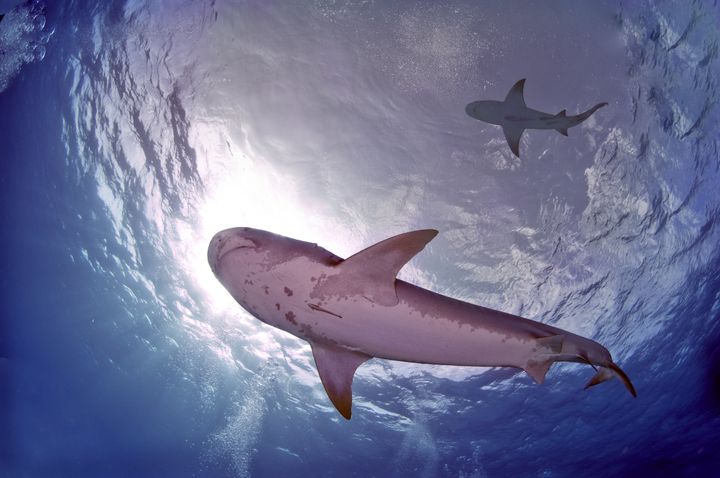
There are few places left where you can predictably encounter tiger sharks without luring them in with bait, and to the surprise of many, Costa Rica's Cocos Island is now one of them.
Cocos, a national park 340 miles off the Central American nation's Pacific coast, is best-known for its large schools of scalloped hammerhead sharks, among other large predators. Tiger sharks were almost entirely absent from the island for decades, but in the last few years sightings have become more and more frequent.
"Now it's weird if you get a trip without a tiger," says Rodrigo Roesch, a cruise director for Undersea Hunter, one of two companies making periodic trips to the island. "Before, they were not even on the list."
The return of the tiger after a 30-year hiatus has not been widely publicized, so not every diver booking a trip to Cocos knows they'll be blowing bubbles next to this marine giant, an apex predator capable of cracking a sea turtle's shell like a pistachio.
The tigers, which commonly roam tropical and temperate waters, mysteriously started showing up in small and large numbers in late 2008 (up to seven tigers were spotted during a single dive that year, says Roesch). The reasons are unclear, but according to Randall Arauz, director of Pretoma (which stands for Marine Turtle Restoration Program in Spanish), they are back because the island offers shelter from fishermen.
Tigers, which are considered a near-threatened species, are sought after for their skin, fins, flesh and liver (the latter is turned into vitamin oil). Cocos waters have been protected, to varying degrees, since 1984, but Arauz tells me that it wasn't until 2002-2003 that a real effort to protect the island emerged. These added measures have allowed tigers to establish a presence in Cocos despite the limited resources available to such a vast area (the marine national park extends for 12 miles around the island, and when I was there this summer, only one patrol boat was active).
Through tagging, Pretoma has discovered that the tigers are not permanent residents of the island. They hang around for a few months (mainly in the north side) and then continue their journey across the Tropical Eastern Pacific.
Sitting at the top of the food chain, tigers can eat pretty much anything (even license plates have been found inside their bellies). In Cocos, they seem to have a preference for green turtles, especially the young ones. In fact, Arauz tells me that their population has declined since the tigers took charge. Other species are also spiraling down, like the silky, silvertip and scalloped hammerhead sharks, but in these cases most fingers point to fishing.
"In the last thirty years, the general shark population in Costa Rica has decreased 90 percent," says Arauz.
According to National Geographic, tiger sharks, which can reach a length of up to 20-25 feet, "are second only to great whites in attacking people. But because they have a near completely undiscerning palate, they are not likely to swim away after biting a human, as great whites frequently do."
With such a reputation, it's hard to understand why anyone would want to enter the water with a tiger, especially without a cage. To my surprise, I felt nothing but awe when seeing my first "man eater" or "wastebasket of the sea," as tigers are sometimes referred.
It happened at Manuelita, the tiger hangout par excellence. As soon as I hit the bottom, I saw the gracious tiger effortlessly hovering over the sand. Its eyeballs seemed to be the only part of its body doing any work, constantly moving side to side in a patrolling manner.
There have been no tiger attacks on humans in Cocos, according to Undersea Hunter. I had to ask because, unfortunately, a tiger's reputation precedes its magnificence. In reality, the biggest threat surrounding Cocos are humans and their fishing devices.
Naturally, at the beginning divers were cautious because tigers were curious.
"It was a new place for them so they were more territorial," says Roesch. "They wanted to let people know that they were here and they were for real."
These days they are more shy. So your only worry while diving in Cocos should be that the tigers will be curious enough to stick around for that winning photo op.
The Return of the Tiger from Edwar Herreño on Vimeo.